Earlier this month, I visited the city of Milan in Italy. I've already covered my visit to Bellagio, Lake Como boat trip, and the town of Como, a visit to the science and technology museum, my impressions on "The Last Supper", the Brera Gallery and Eataly, and the visit to Sforza Castle. One of the main attractions is in Milan, and I've been waiting to cover it as I've had to go through a lot of photographs. Milan's cathedral (Milan duomo) is the third largest cathedral in Europe and the fourth largest in the world. It is actually a huge building, and my photographs cannot do it justice. The cathedral actually has a number of attractions associated with it. There is the cathedral itself, the crypt and foundations of the old cathedral, Saint Carlos' (Charles Borromeus') tomb/relic, the museum on the other side of the square, and the rooftop tour.
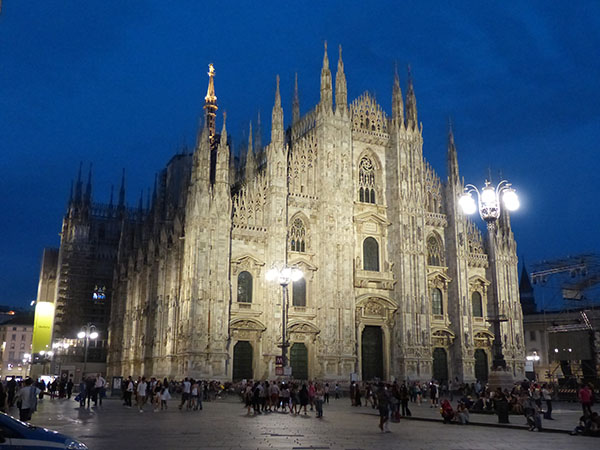

The current cathedral dates from the mid-1300s, although an earlier one occupied the same location. It is set in the old city of Milan, which used to be a walled Roman city but only a small portion of wall now exists. The cathedral is at one end of a spacious square, so visitors should be able to get better photographs at a distance. During my visit, a classical music concert was held in the plaza, and stages and lighting/stereo equipment was set up for this and obscured one side of the cathedral if standing at a greater distance.
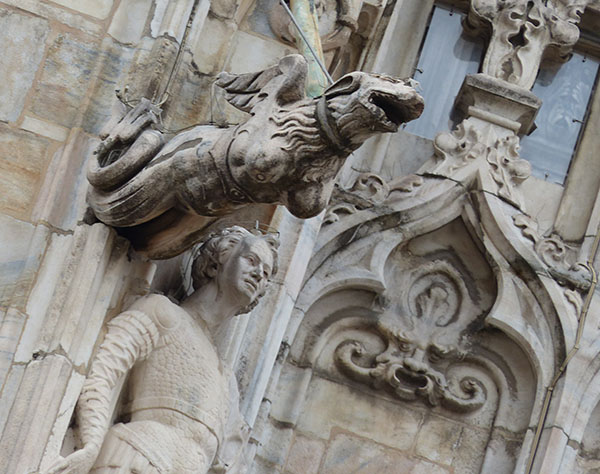

The cathedral was visited in my first full day, and I prefer to get up early to beat the crowds, particularly when I read that the lines/queues can be long. So, I arrive just after 8:00 in the morning, and there's already huge crowds. It turned out that the crowds were for the ordinantion of a new priest for the cathedral and the visitors were mainly locals or who had come from a pilgrimage. For this to have attracted large crowds must mean that religion is an important part of life in Italy. After being in the line for a while, eventually the people in front of us realised that we were tourists and told us what was going on. So, we ended up sitting down in the square on a statue plinth and booked advance duomo tickets (which is what I was going to avoid) to visit the cathedral and the rooftop.

There are several options when buying tickets. You can get tickets for the cathedral on its own, crypt and cathedral, rooftop, rooftop with lift/elevator access, and a combination. There also are guided tours for an additional cost. When buying from the cathedral, the tickets are valid for a day. With the lift access, we found the queue went very fast (we got a little unlucky that there was not a queue at all but a large tour group partially beat us to it). The lift is small and can only take about six people at a time, but it is quick to the top. Also, with the lift access, you can bypass the main entrance line (which you still have to wait in even if you did buy "skip the line" as we did), and complete the rooftop then get the lift down for the cathedral (though make sure you do get the correct lift and not the one that goes back to the street).
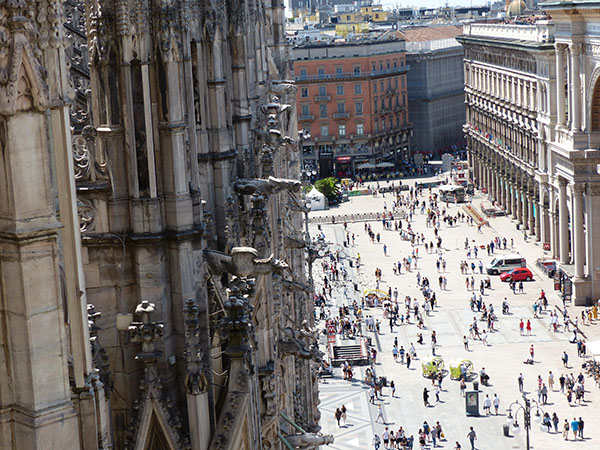
Once on the rooftop, you start at the lower level. This is a unique experience because I do not know of any other cathedral in the world where you can climb on top of the actual roof. You can see the people below, the gargoyles and the flying buttresses that ground the church and keep gravity from collapsing from the weight of the thick walls and ceiling.
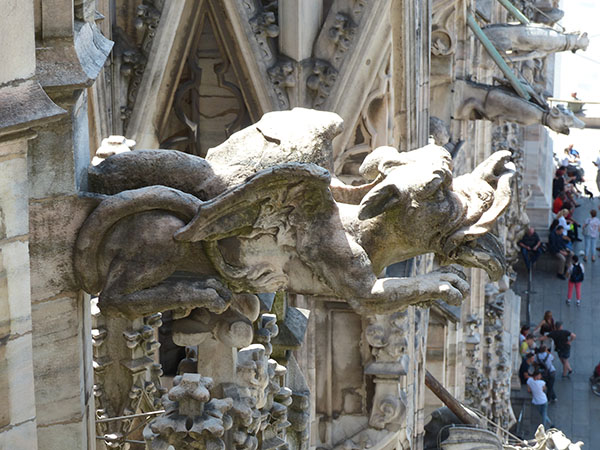
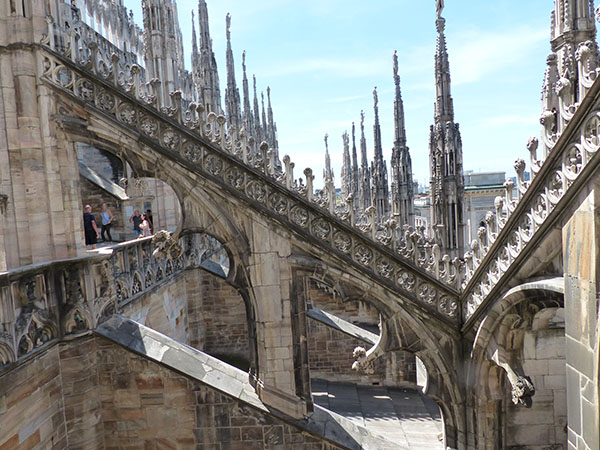
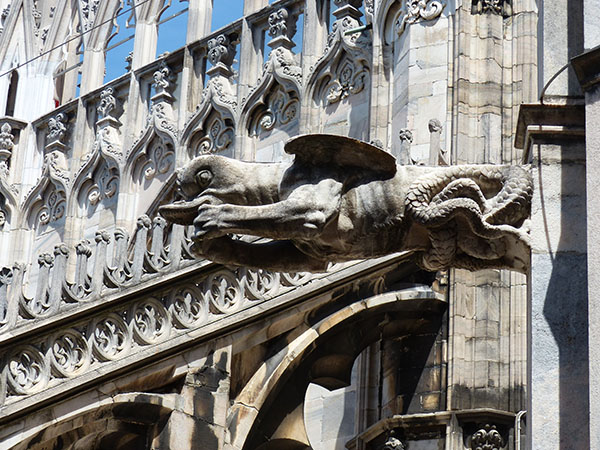
Everywhere I looked, I saw a gargoyle or carving.
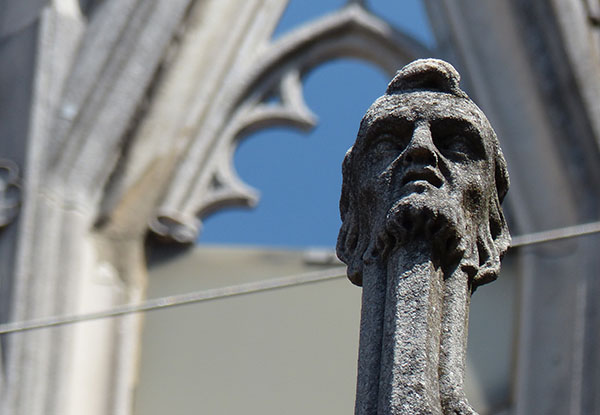
Each area of the rooftop that was being held up by the buttresses created a little area on the roof, and there are doorways to walk through. They must have intended for the roof to be walked on because of the amount of sculptures and gargoyles that you can only see while on top.
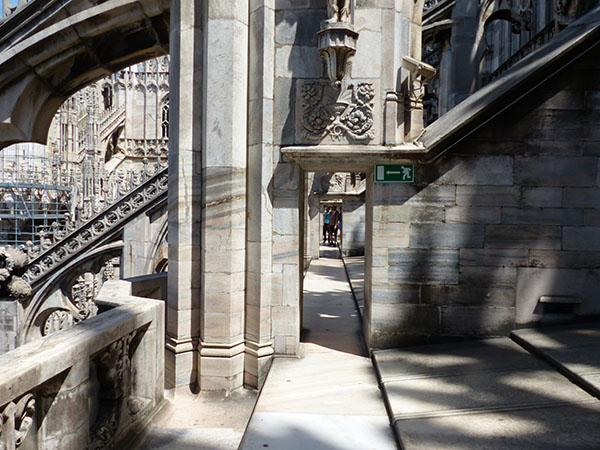
From here, you eventually get to the end of the building. The walkway only goes along one side of the cathedral. At the end are a narrow row of steps that allow visitors to access the very top of the cathedral.
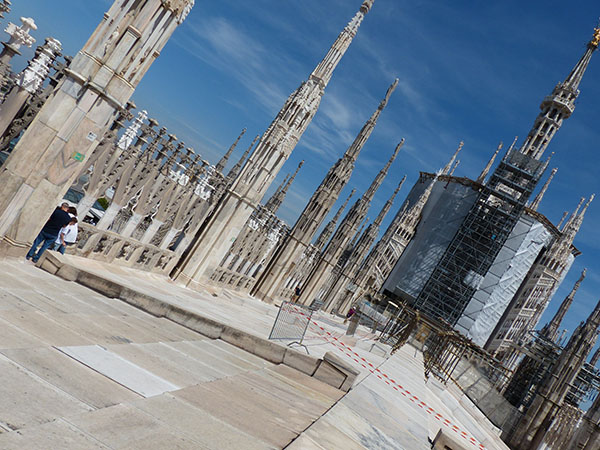
The photograph above and below shows the top with part of the gold statue in view.
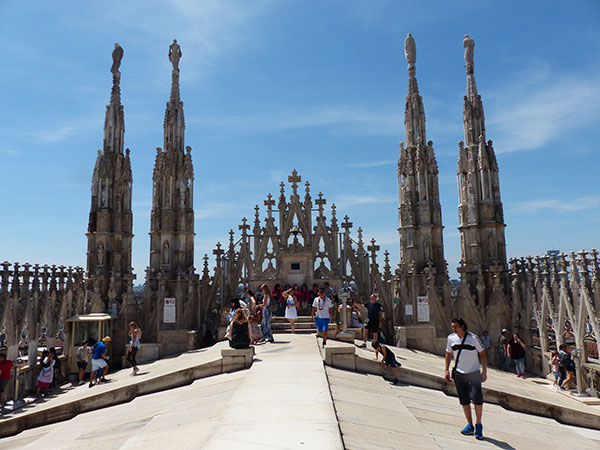
From here, the views across the city of Milan are stunning. There are good views over the Galleria, the arcade of shops and restaurants just next to the cathedral, and its dome can be seen here.
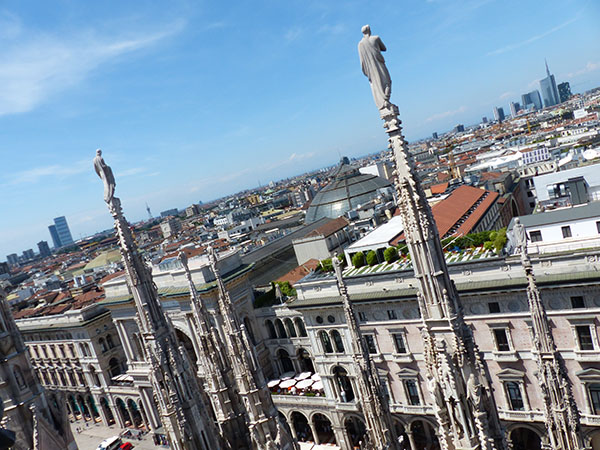
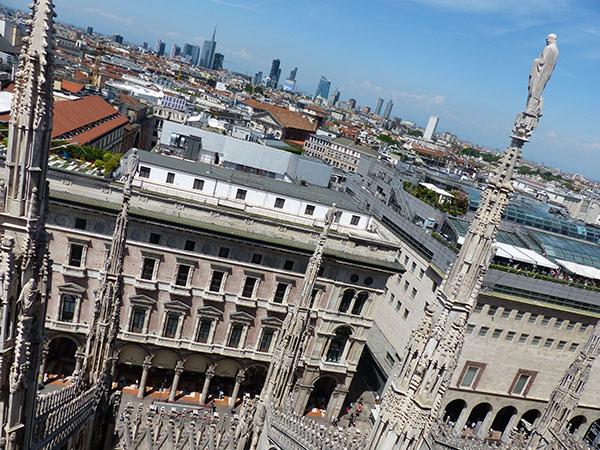
On the opposite side of the cathedral, visits can look over the cathedral museum.

The tower, Torre Velasca, can be seen in the distance. This building was designed to mimic medieval architecture, such as the style of Sforza Castle in Milan.

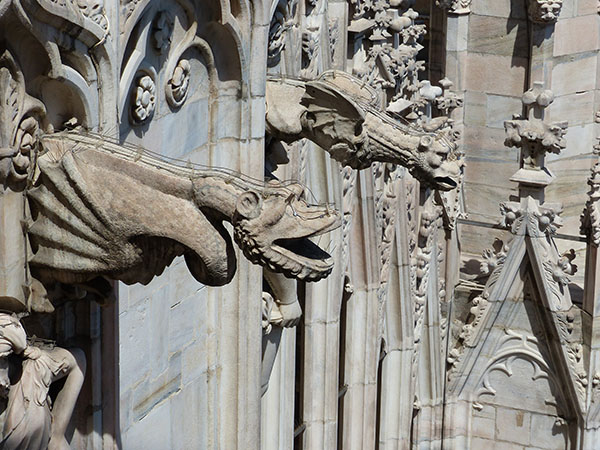
After the wander around on top of the very warm cathedral roof, we traced back our steps and followed the sign to the lift for the cathedral entrance, which we had to wait a few minutes for as the lift here is smaller than the other and can only take about four people. Finally, we were inside the main cathedral building, and the size of it was impressive. I cannot really add much, so I will let the photographs do the talking.
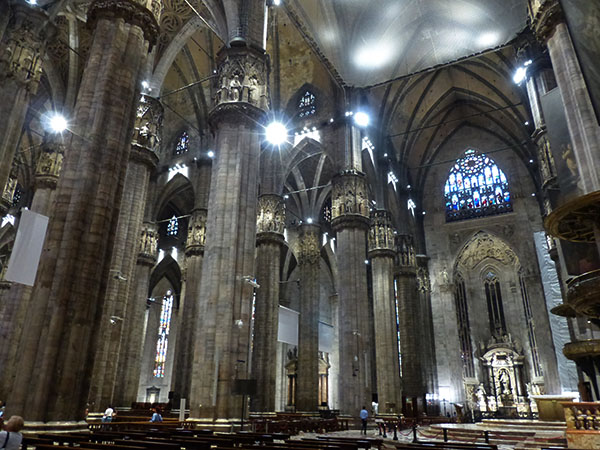

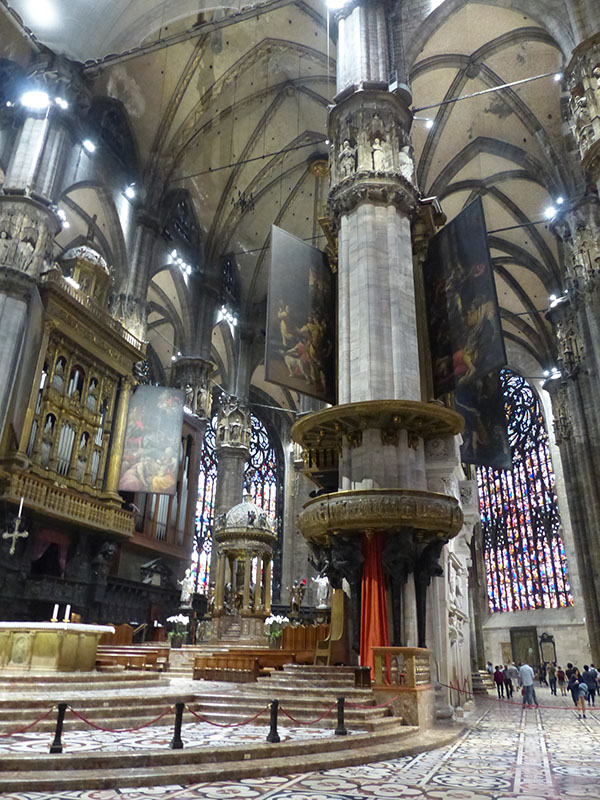

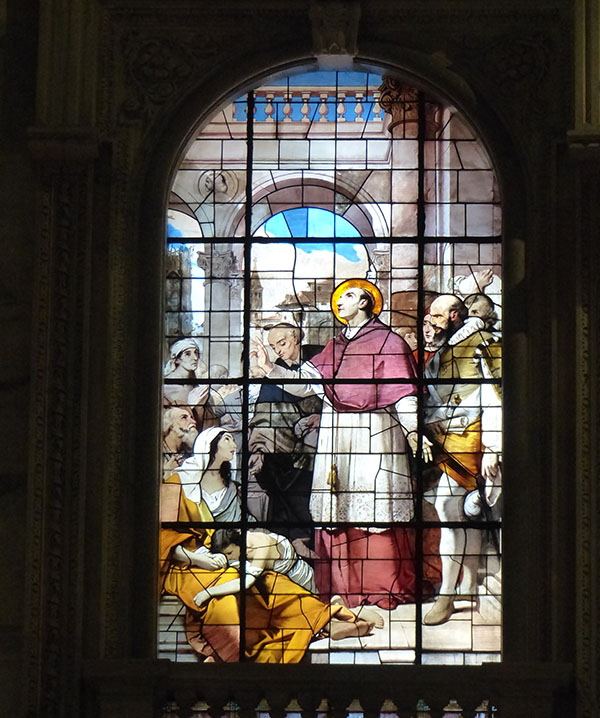
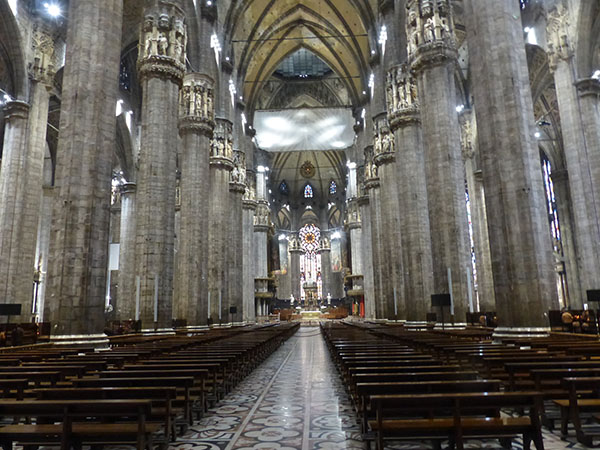
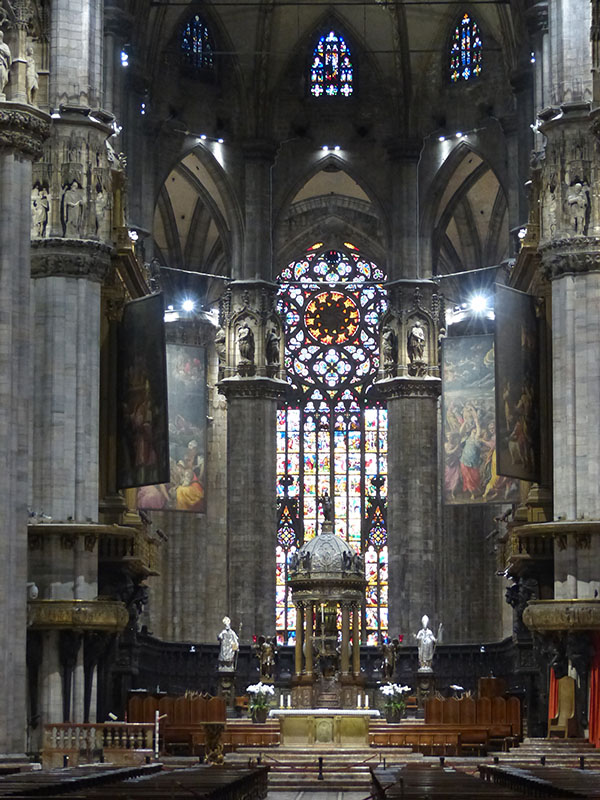
After seeing a part of the cathedral, the next visit was to see the crypt. The section of the crypt is an archeology museum. This covers the part of the old cathedral which was built on for the new one. It covers the time of the 4th century when the Baptistry of San Giovanni was built. It shows the height level change from today's urban world from the middle ages. There are several places where the original mosaics and floor tiles can be seen.

The remains include the Funerary Basilica, which suffered heavy damage after sewage works in the 1800s. There are also a few graves here, including what was thought to be a family tomb and the tomb of a newborn baby.
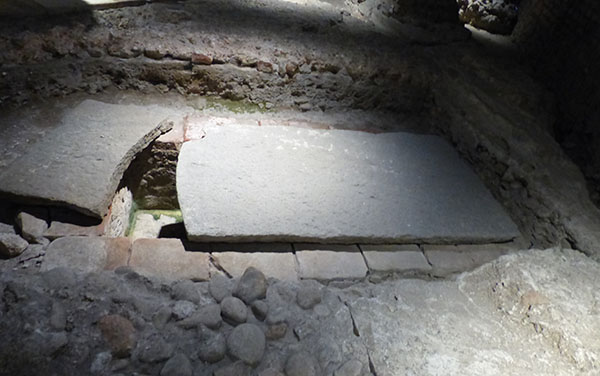
The medieval frescoes to be seen here in the crypt are one of the highlights.
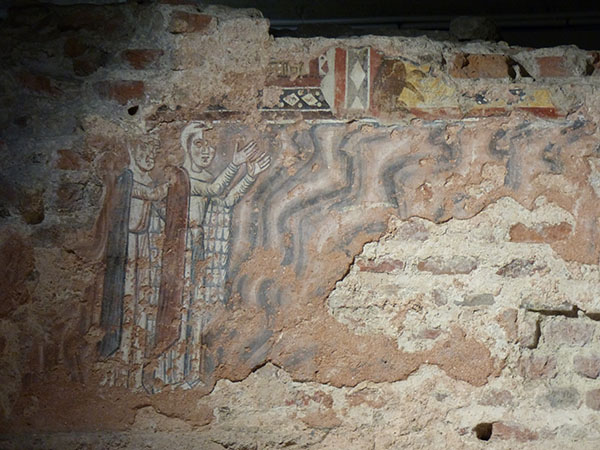
A view of the floor tiles is below.
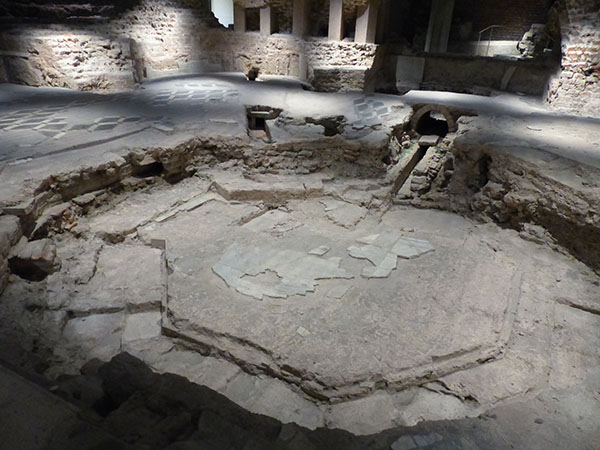
The huge monolith is below is from the front of the Romanesque Sainta Tecla, which was the first cathedral. The part of the new cathedral is built on top of it.
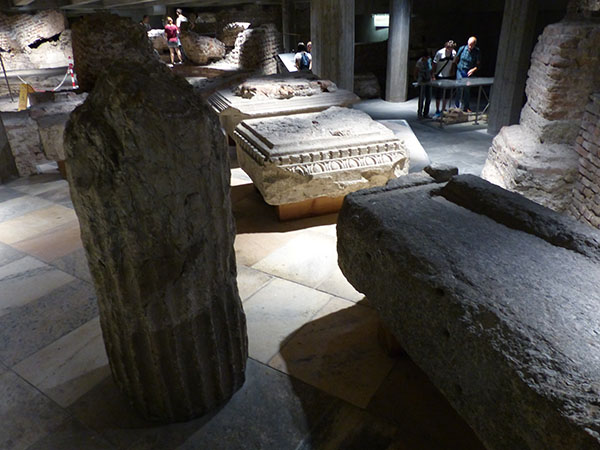
Also a cabinet contains items found in the walls.

After visiting this part of the crypt, we walked to another part of the building (out the exit to the apse) to the crypt of Saint Carlos (Charles Borromeo), archbishop of Milan cathedal. There was a room for the body and also one with a relic chest.
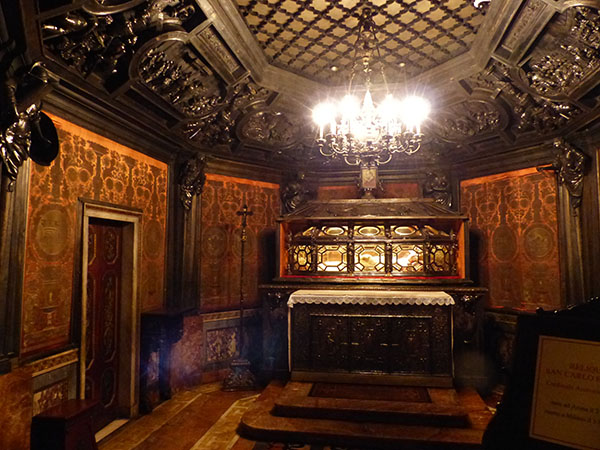
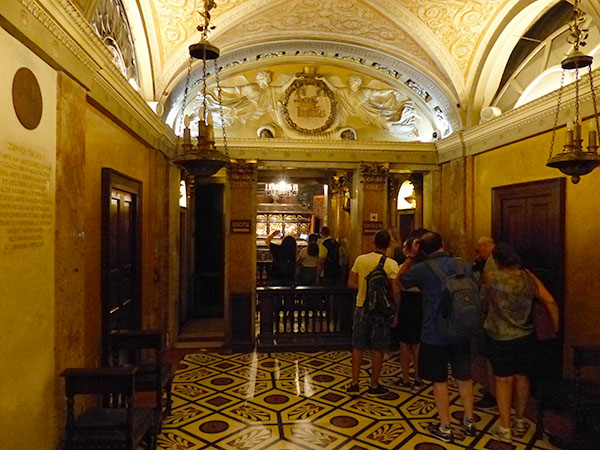

After leaving the crypt, I had a wander around the apse.
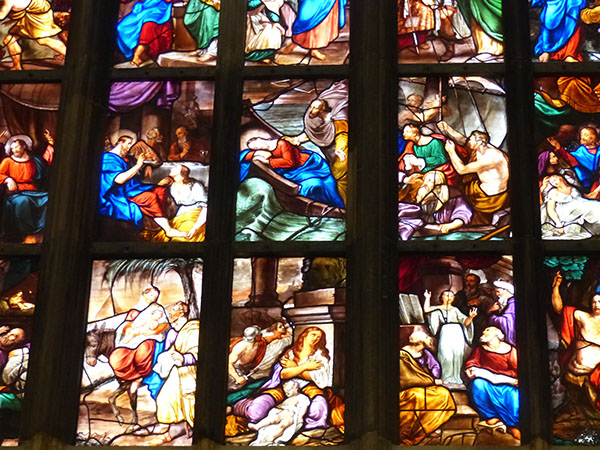
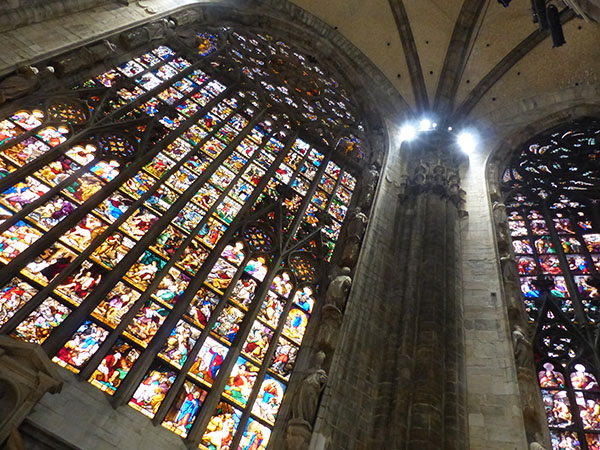
The Modonna of Milan cathedral (the gold figure on the spire) is shown as a replica in the church.
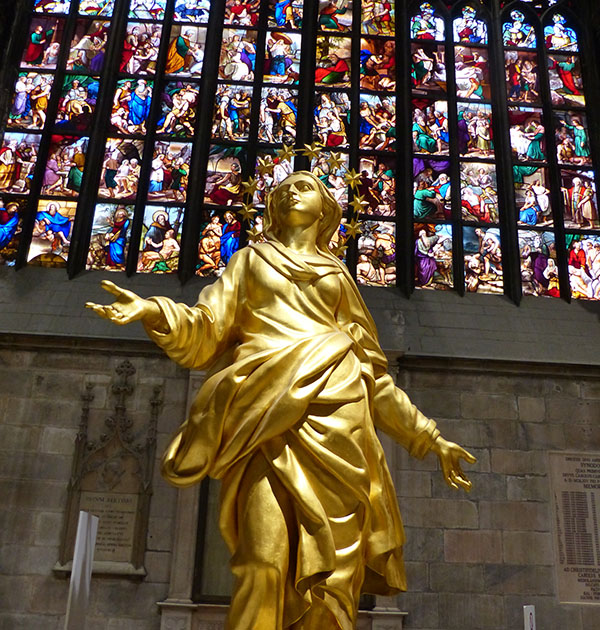
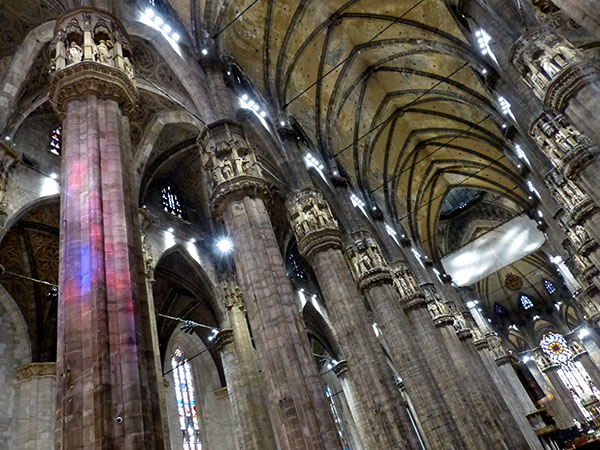
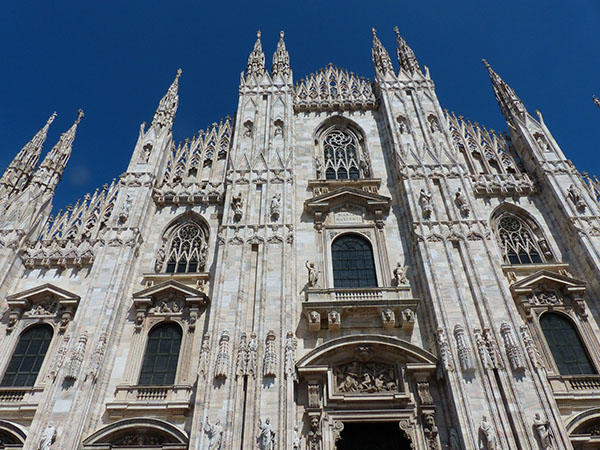
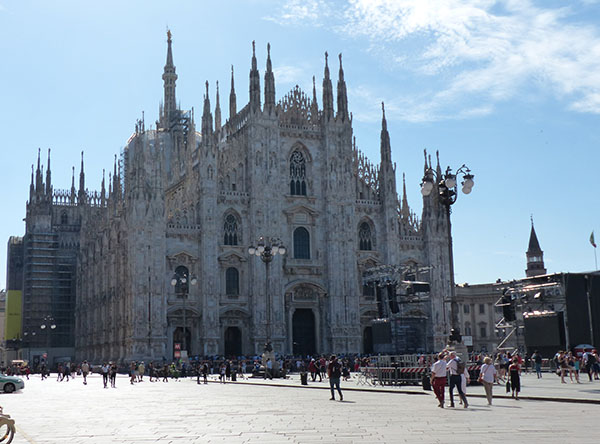
I also took a few photographs of the cathedral at dark on one of my evenings in Milan. It is a nice place to watch people.
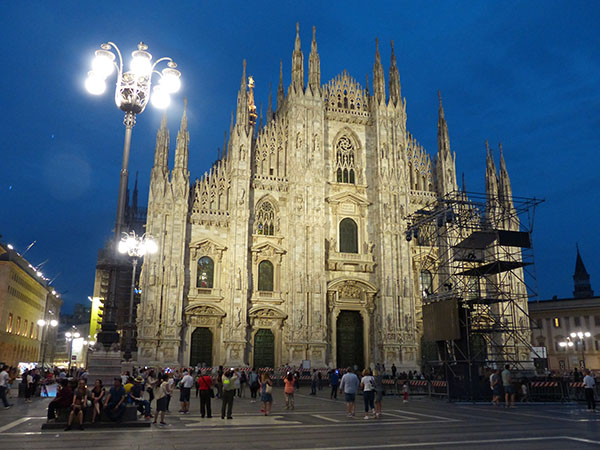
After wandering around the cathedral and the rooftop, it was time for a refreshment. In the Galleria, I had found a little cafe earlier in the day and we stopped there to get lemonade. This is the best lemonade that I have tasted, and it is made from lemons on the Amalfi coast.

Milan cathedral is open from 8:30 in the summer, and tickets can be purchased in advance or through waiting in the queue.
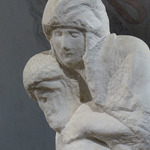


Leave a comment